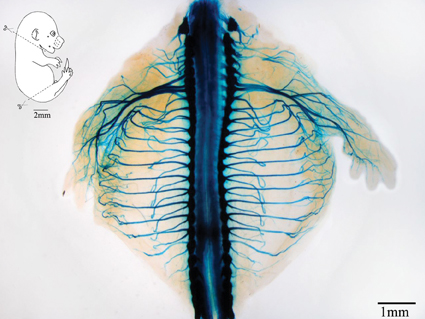What is between a nerve and nerves? Are the nerve cells responsible for feeling the sadness? How do you say sadness in the plural? And what do the nerves look like?

Written by: Zvi Atzmon, Young Galileo
Have you ever thought why brain cells are called "nerve cells"? Although feeling sad is an expression of the activity of brain cells - which are nerve cells, the same is true for all emotions - joy, fear, excitement, anger and more. the answer? Just because of a mistake. This is not a scientific error, but a Hebrew error. There are experts on the activity of the brain and the nervous system, who mistakenly say "nerve cells", but what they mean (in correct Hebrew) is nerve cells. There is nothing to do with the difference between sadness - which is a type of emotion, and sadness - which is a term from the field of body structure.
The opposite of joy
It can be said that sadness is the opposite emotion of joy and happiness, and is similar to sorrow. It is familiar to us from life, for example sadness after parting with a friend who moved to another city or following the death of a beloved pet. Those who feel sadness tend to look down, they lack energy and want to be alone, to be silent and sink into sadness. The downcast look and the other behaviors that characterize sadness, such as crying, make it clear to the environment that we are sad and need encouragement and comfort, empathy and hugs, even if we haven't said it in words.
Sadness is mentioned for the first time in the Bible in Genesis chapter XNUMX verse XNUMX, in the curse given to Eve "in sadness I will give birth to sons". Here the meaning of sadness is slightly different from what is accepted nowadays, and its meaning is closer to pain.
The plural form of sadness in the sense of a type of emotion is nerves, and the letter B is not stressed. But the use of this plural is rare.
Bright "threads" in the body
Inside our body, sadness is like a bright and long thread. The plural form - nerves - is very acceptable, especially in everyday language to describe particularly angry feelings ("I got on my nerves"). But we will not refer to such "nerves" here, but to nerves that are structures in the body.
A nerve is a beam made of many thin nerve fibers (axons) that are arranged parallel to each other, like wheat stalks in a sheaf of wheat or many thin telephone wires that are twisted together in a telephone cable. And like a telephone cable, a nerve is also used to transmit information - information from the body to the brains (the spinal cord and the brains of the skull - such as the cerebrum, cerebellum, midbrain and midbrain) and commands from the brains to the body (for example, a command to move the muscles of the hand).
12 pairs of nerves connect the brains of the skull to different body parts, and they are called cranial nerves. One of them is the interior designer; The facial nerve is made up of nerve fibers that carry commands from the brain to move the facial muscles and nerve fibers that encourage tear secretion; It also contains nerve fibers that carry information in the opposite direction: to the brains - taste sensations from the front of the tongue and touch sensations from the earlobes to the brains.
Another cranial nerve, called the "eighth nerve", carries information about hearing and balance from the inner ear to the brain. The optic nerve carries information from the retina to the brain, and is the second cranial nerve. The body also has many non-cranial nerves, for example those that connect the spinal cord to the limbs.
The nerves can be seen with the eye, but the building blocks of the nerve can only be seen under a microscope - they are very thin (even though they are very long), and they carry information at a relatively high speed (but slower than the information that travels through a telephone cable). The transfer of information along nerve fibers is done through an electro-chemical phenomenon called "neural action potential": the inner part of the nerve fiber, which is normally electrically negative, becomes positive for about a thousandth of a second. A nerve fiber is an extension of a nerve cell (neuron).
There are close to a hundred billion nerve cells in our body, most of them are in the brains of the skull, and others - in the spinal cord (also known as the "spinal cord"). By the way, unlike the spinal cord (spinal cord), the spinal column is a structure made of bone vertebrae with cartilage discs between them, and not nerve cells! Many nerve cells are arranged around the intestines, and relatively few are also found elsewhere in the body.
That part of the nerve cell to which the nerve fiber is attached is called the "neuron cell body", and it processes information that reaches it from other cells and also strengthens the nerve fiber - supplying it with essential substances, such as proteins. In most cases nerve cells communicate with each other by secreting substances called "neurotransmitters".
Did you know?
Faceolis is a paralysis that sometimes affects half of the face due to damage (temporary and transient) to one of the pair of facial nerves. The temporary damage to the nerve can be the result of a virus.
The article was published in the Galileo Young Monthly for curious children. For a gift digital sheet Click
